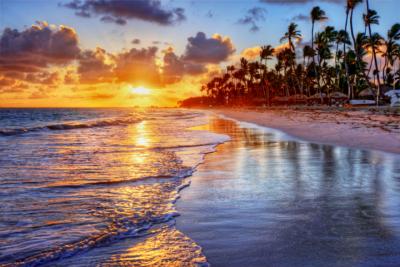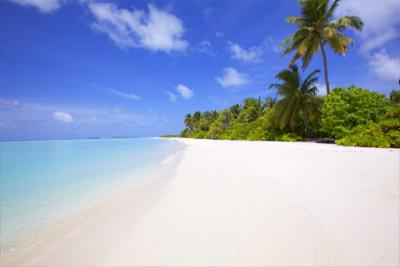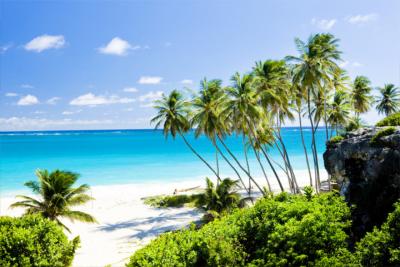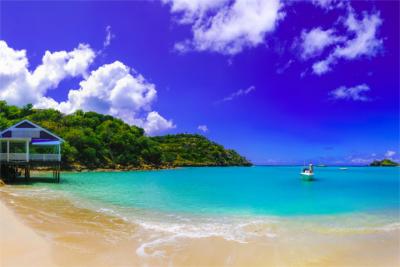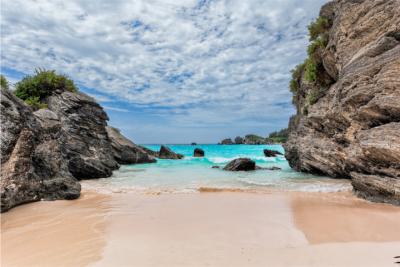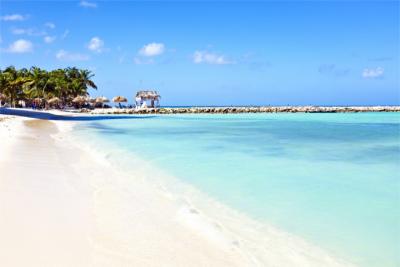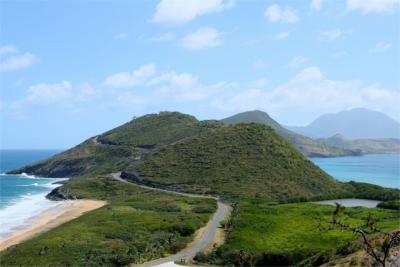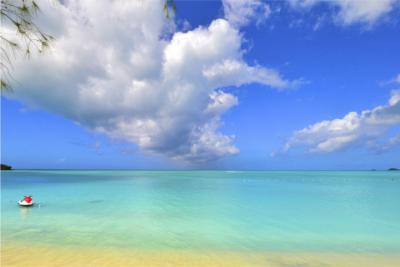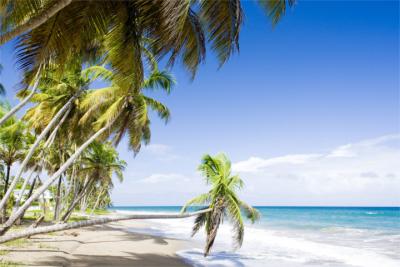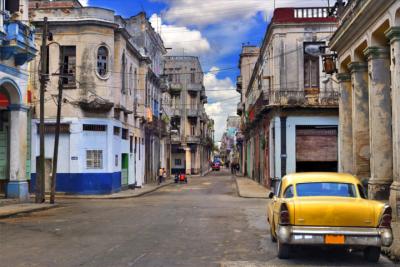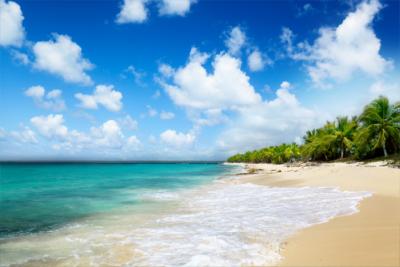Travel Offers
Travelmyne Featureprint
Distance
Trinidad and Tobago – Unlike Siblings
They are mentioned in the same breath but they differ considerably: in Tobago, travellers find a placid, native storybook island. Trinidad, however, has left its existence as a sleepy island behind and is vibrant with modern, lively activity today.

Geography - A Caribbean island state
Together the two islands Trinidad (4,825 km²) and Tobago (303 km²) form the Caribbean island state of the same name ("Trinidad and Tobago"). While they once belonged to the South American mainland, they are now located near the coast of Venezuela. The greater island Trinidad is characterised by three mountain chains. Three distinctive mountain tops were the reason for the island's name "Trinidad" (=trinity). Tobago has one mountain range and was named after the cultivation of tobacco which was practised during colonial times. Six smaller islands also belong to the state. The climate is warm and tropical all year with temperatures of about 30 °C at day and 20 °C at night.

Nature - A hotspot of biodiversity
Trinidad and Tobago are hotspots of biodiversity, a term which is only awarded to regions which have an extremely diverse flora and fauna. Besides a number of savannah forests, large parts of the island state are covered in tropical rainforest, which contains age-old trees with heights of up to 45 metres. Different types of hummingbirds, parrots and pelicans are examples of the 210 native species of birds. In addition, the archipelago is home to about 600 types of butterflies, numerous colourful or bizarre insects, bats and crawlers. As it was common during colonial times, cocoa and sugar cane are still grown here today.

Natural sights - Magical beaches and a unique underwater world
Two of the island state's wonderful beaches are the Pigeon Point and the Store Bay on Tobago, from which you can watch brown pelicans. Maracas Bay, Las Cuevas and Chaguaramas, on the other hand, are popular beaches on Trinidad. The underwater paradise of the island state can best be explored at the Buccoo Reef. Tobago's biggest coral reef is a playground for about 70 species of fish and 39 types of corals. Sharks, giant devil rays and dolphins live there. A unique natural spectacle is the Pitch Lake, which repeatedly fills itself. The Caroni Swamp is a paradise for birds and home to the scarlet ibis, for example.

Culture - The small island's charm and the dynamic economic centre
The Native Americans originally lived on both islands. Later on, the territories were occupied by the Spanish. Especially in the 17th century the nations around Tobago were in conflict, which caused the island to change owners 31 times. From 1814 on, both islands belonged to the United Kingdom and today they are part of the Commonwealth. The production of oil resulted in an economic boom and an industrial boost. While Tobago still has the charm of a small island, Trinidad is currently developing into a dynamic economic centre. Both islands are characterised by their enjoyment of celebrating, dancing and football as well as the inhabitant's chatty way of talking.

Cultural sights - Scarborough and Port of Spain
Lovers of history get their money's worth in Tobago. Especially the capital Scarborough with the Fort King George and the famous Gingerbread Houses (wooden houses in Creole gingerbread style) make the colonial times palpable. Port of Spain, Trinidad's capital, which is enclosed by hills, displays the island state's modern side, in addition to many historical testimonies. You find markets, mosques and cathedrals next to skyscrapers. The city's Botanic Garden accommodates beautiful orchids.

Experience - Food and carnival in Trinidad and Tobago
Creole, Chinese, Indian and Arab are only a few of the influences which characterise the island state's varied cuisine. It contains dishes made of mussels and fish, chickpea soup and meat in cornmeal pasties among other things. In addition, the island state is known for rum and cocktails. The people on Trinidad like celebrating. The carnival season at the end of February is legendary and attracts tourists from all over the world. Its highlight is the parade in Port of Spain. Furthermore, there are many clubs for going out in Trinidad's cities. Live music and Caribbean dances like limbo or calypso with their fast rhythms can be heard in the nightclubs in the evening. A special event are the goat and crab races, which take place every year. Typical local products are rum, goods made of straw and sisal, wood carvings and CDs with calypso music.

Activities - Between sea and rainforest
Since the island state is blessed with wonderful beaches and sunshine, many kinds of activities are possible at the seaside – swimming, diving, trips on glass-bottom boats, sailing or surfing. Tobago's breathtaking rainforest is definitely worth a visit. You can explore it under your own steam or on a guided tour. The winding hiking trails offer great conditions for active relaxation. There are also cycling and trekking routes. The Tobago International Cycling Classic has developed into a world-wide top event for cycling. Apart from professionals, amateurs can also pursue their hobby against the magical tropical backdrop.

Information
Holidaymakers most commonly arrive by plane at the Piarco International Airport (POS) on Trinidad or at the airport Crown Point (TAB) on Tobago. In addition, there are ferry connections to Venezuela and several neighbouring islands. English is the official language. As a visitor you should avoid some regions due to their high crime rate. Protection against gnats is important because these biting insects can transmit Dengue fever. In contrast to other Caribbean states, hurricanes rarely occur on Trinidad and Tobago. In the cities you can use the relatively cheap share or maxi taxis. You can rent a car, especially at the airports, to travel the islands under your own steam on the well-developed road network.
Trinidad and Tobago are great destinations for experiencing the rainforest's beauty and diversity. In addition, the wonderful Caribbean conditions make it possible to have relaxing, varied holidays at the seaside. The lively and amiable culture of the islands' inhabitants with their turbulent history make your stay a unique adventure.


